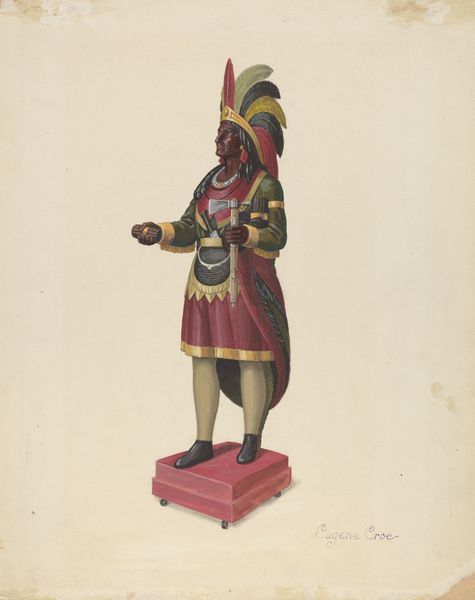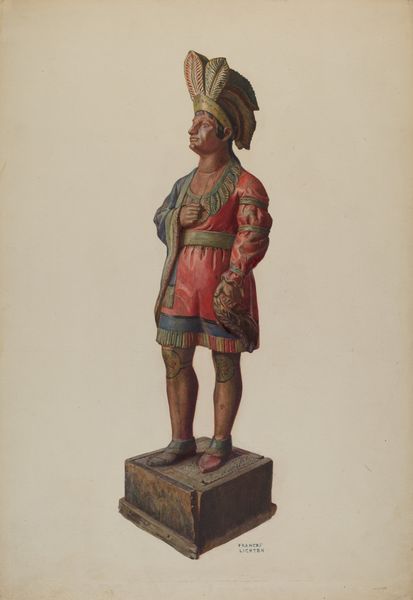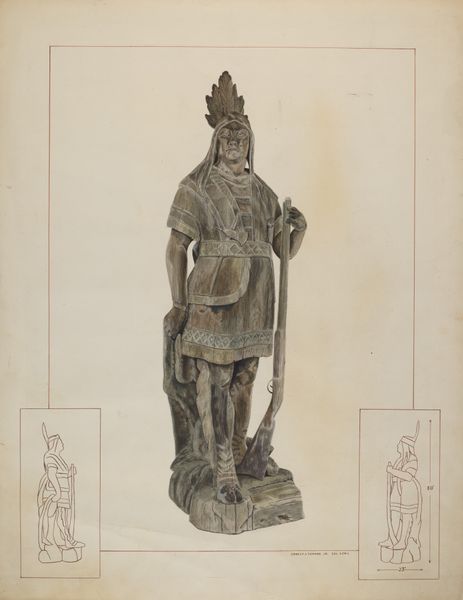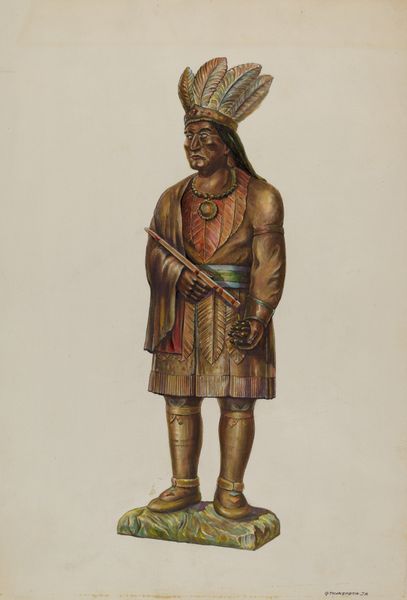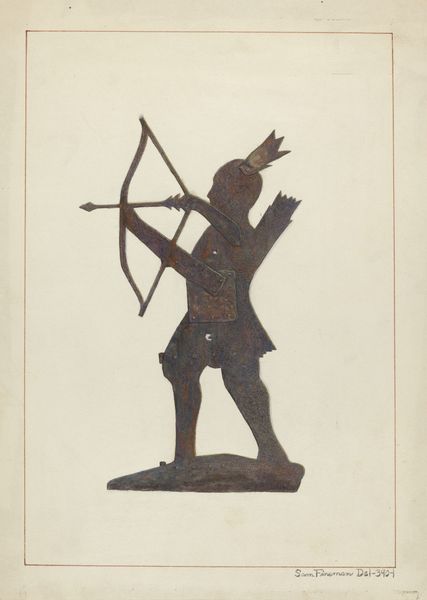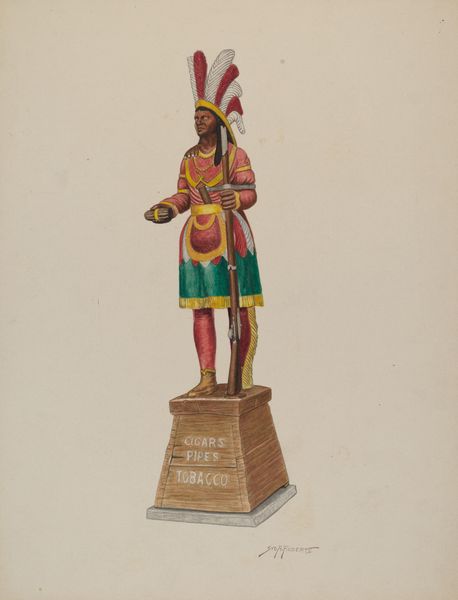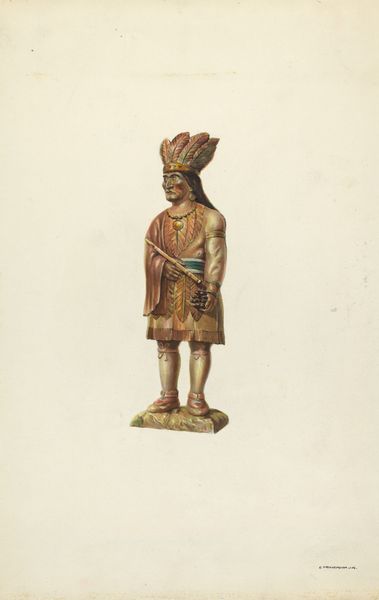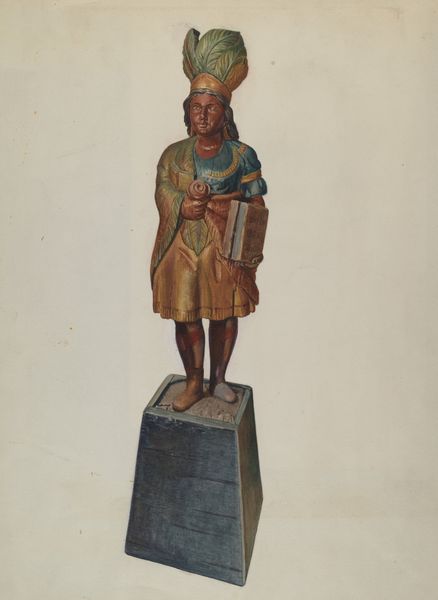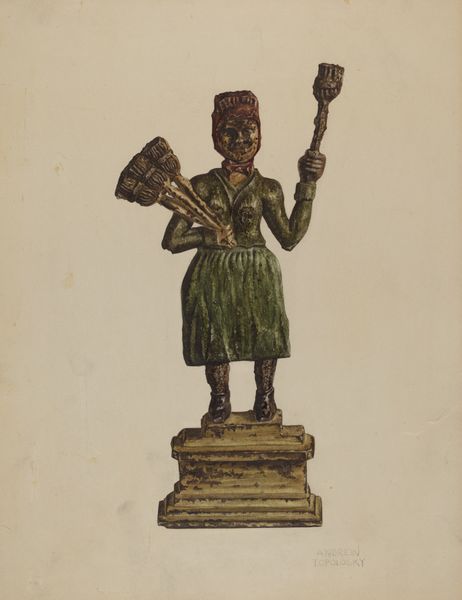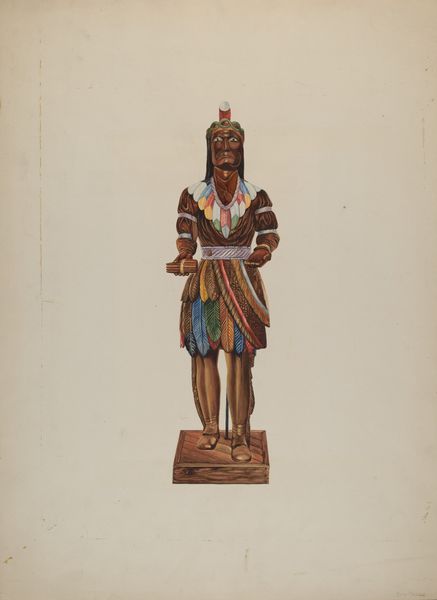
drawing, carving, watercolor, wood
#
drawing
#
carving
#
sculpture
#
charcoal drawing
#
figuration
#
watercolor
#
folk-art
#
wood
#
watercolor
Dimensions: overall: 43.6 x 26.8 cm (17 3/16 x 10 9/16 in.) Original IAD Object: 55" high
Copyright: National Gallery of Art: CC0 1.0
Editor: So, we're looking at "Whirligig," created between 1935 and 1942 by Luther D. Wenrich. It appears to be a drawing, likely watercolor and charcoal, depicting a carved wooden figure. It’s interesting how the artwork renders a handmade object. What strikes you about the materials and their representation here? Curator: What fascinates me is the intersection of labor involved. Wenrich isn't simply depicting an object; he's documenting the process of folk art production. We have a drawing representing a carving. Think of the hand that shaped the wood, and now the hand that renders it on paper. Where was the wood sourced, and by whom? The very choice of media—watercolor and charcoal—highlights the humble origins and materials of the sculpture itself. Editor: That’s a great point. I hadn’t considered the layers of artistic labor involved. It does seem to elevate folk art… Almost legitimizing it, perhaps? Curator: Legitimizing, yes, but also, arguably, commodifying it. The act of representation pulls the object out of its original, perhaps functional, context and places it within a system of artistic value and exchange. This changes our relationship to both the object and the labor that created it. What does this rendering obscure, would you say? Editor: I wonder if it distances us from the actual texture and scale of the wood carving. The drawing flattens the three-dimensional object, making it seem perhaps more delicate or precious than it actually is. It masks the utilitarian aspect, perhaps. Curator: Precisely! Consider also the historical moment. This was created during the Depression. To me, this piece speaks volumes about resourcefulness, craft, and the social value placed (or not placed) on handmade goods. What I see reflected is more than just a carving, but an economic narrative being rendered with artistic skill. Editor: Wow, I never would have thought about it that way. So much is revealed when we consider not just *what* is depicted, but how and *why*. Curator: Absolutely. And considering those points deepens our experience of viewing the object represented.
Comments
No comments
Be the first to comment and join the conversation on the ultimate creative platform.


